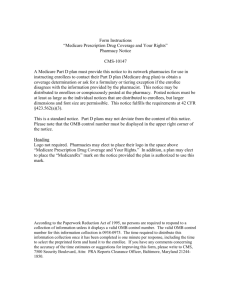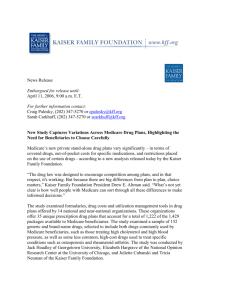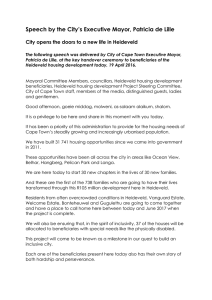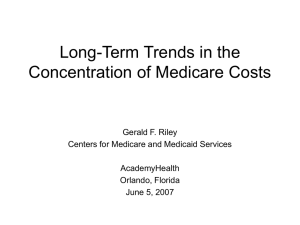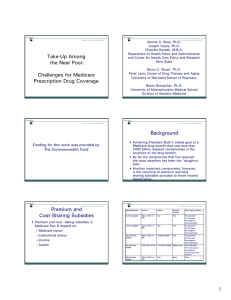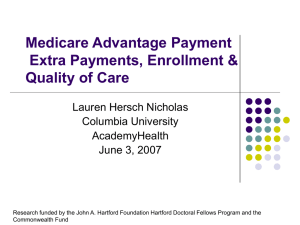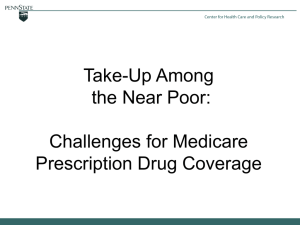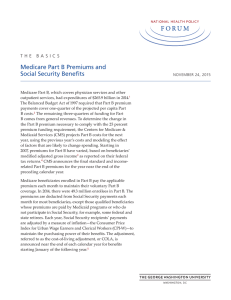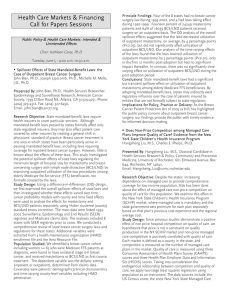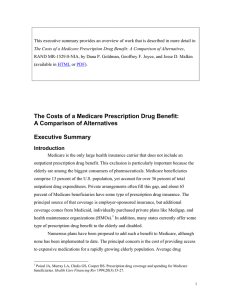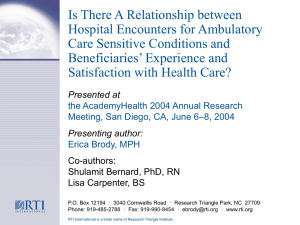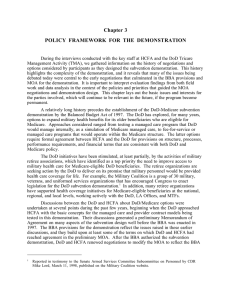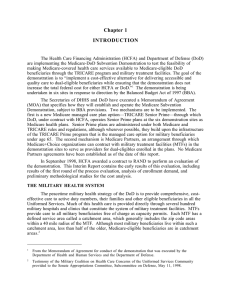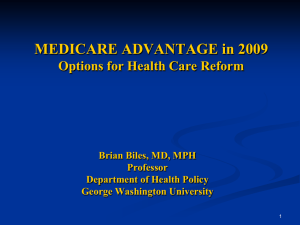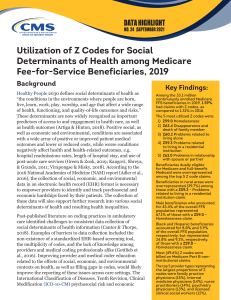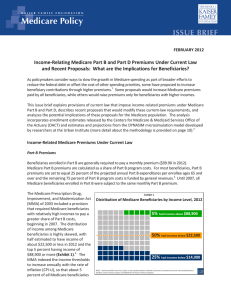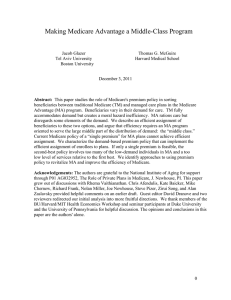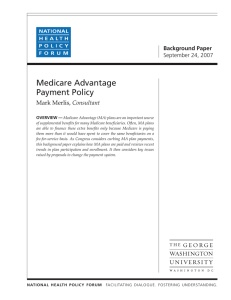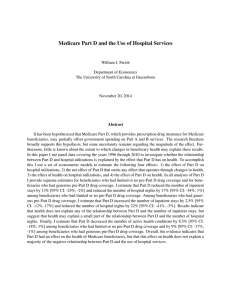Medicare+Choice: Growing or Shrinking? Robert A. Berenson
advertisement
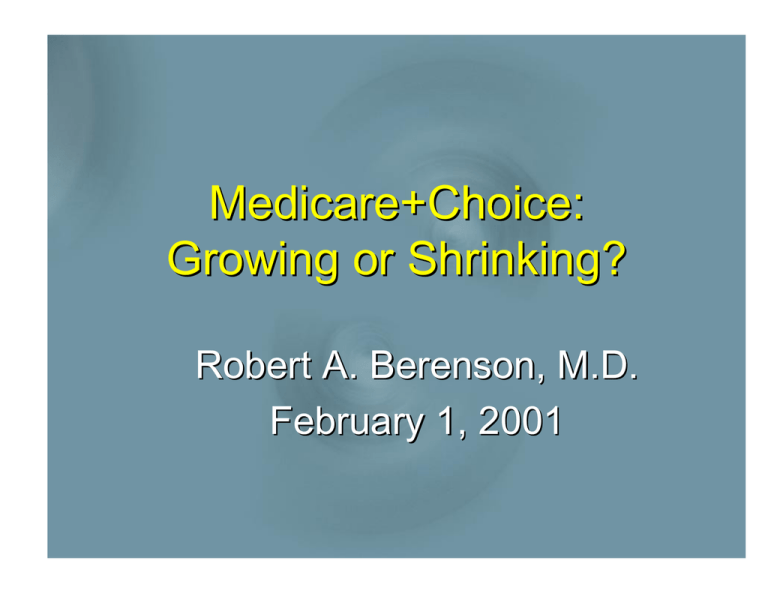
Medicare+Choice: Growing or Shrinking? Robert A. Berenson, M.D. February 1, 2001 M+C Enrollee Participation (16%) Enrollment in Thousands 7000 6347 6000 (14%) 6261 5599 5000 4000 3089 3000 2000 1263 1000 0 Dec-90 Dec-95 Dec-99 Dec-00 Jan-01 Source: HCFA/Center for Health Plans and Providers data States with Highest Enrollee Participation Oregon 31% Colorado 29% Rhode Island 34% Pennsylvania 25% California 39% Arizona 36% Florida 25% Recent Withdrawals # of Contracts Affected Beneficiaries “Abandoned” Beneficiaries January 2001 118 934,000 159,000 January 2000 99 327,000 79,000 January 1999 99 407,000 51,000 1999-2001 Withdrawals -Affected Beneficiaries By State Texas -- 260,000 Florida -- 162,000 New York -- 158,000 California -- 113,000 Maryland -- 104,000 M+C Access ■ At peak, 74% of Medicare beneficiaries had M+C coordinated care option ■ In January 2001, 63% have such an option ■ In non-MSA counties, 14% with option New Plan Approvals Since July 1998 Over 60 new or expanded area approvals ■1 PSO ■ 1 Private FFS (Currently 4000 enrollees) ■ 0 PPOs ■ 0 MSAs Benefit Trends ■ Zero premium plans decreasing (from 70% to 42%) ■ 2/3 provide Rx ■ 90% of beneficiaries with an M+C plan have access to Rx Benefit Trends cont’d ■ Plans using triple tier pricing with tighter out of pocket caps ■ 5% of enrollees have unlimited generic and cap > $2000 Major BIPA 2000 Provisions ■ Increase in minimum payment amount per capita for 2001 – MSA with 250,000 population -- $525 – Other areas -- $475 ■ Opportunity to Reenter/Revise in March 2001 ■ Increase in minimum percentage increase from 2% to 3% Major BIPA 2000 Provisions cont’d ■ Confirmation and Phase-In of Risk Adjustment – 10% until comprehensive R.A. in 2004 – Fully phased in by 2007 ■ Permit Part B Premium Reductions, effective 2003 ■ No action on lock-in, scheduled for January 2002 Reasons for Program Instability ■ Costs rising faster than government contribution – BBA fixes government contribution by formula – HMOs can pass on premium increases easier in commercial market ■ Difficulty maintaining provider networks – After BBA, providers cannot cost shift onto Medicare as readily Reasons for Program Instability cont’d ■ Burden of government requirements/ oversight – Both statutory and regulatory ■ Uncertainty – e.g. risk adjusted payments ■ Local Market factors – see Brown and Gold, Health Affairs, Nov/Dec 1999 Reasons for Program Instability cont’d ■ The Market, i.e. Wall Street ■ Strategic business decisions – Aetna, CIGNA leaving – Pacificare, Kaiser staying ■ HCFA Hostility ??? ■ Enrollment based on extra benefits, not service or quality Are Plans Paid Enough? GAO: ■ Paid too much for providing A and B benefits, but… ■ Not enough to continue level of extra benefits Are Plans Paid Enough? cont’d GAO: ■ Aggregate payment to plans exceed FFS spending by 21% in 1998 ($1000 per enrollee) – 60% of excess from favorable selection – 40% from forecast errors and BBA protections ■ New “floor county” payments will increase overpayments Thoughts on Administered Prices ■ Link to FFS spending problematic – Plans should have advantages where delivery system excesses and inefficiencies – Politically, hard to explain ■ Payment updates do not capture input price changes Thoughts on Administered Prices cont’d ■ Alternative could be competitive pricing – Demo of competitive pricing stopped 4Xs – Conceptually straightforward – Politically and administratively difficult

